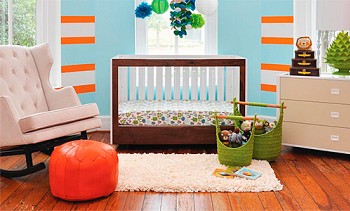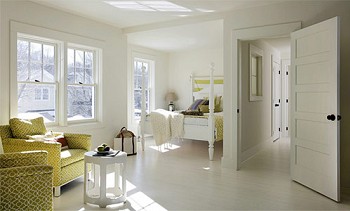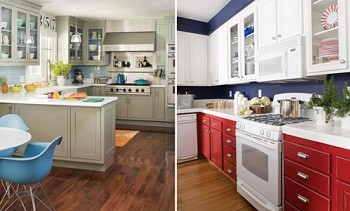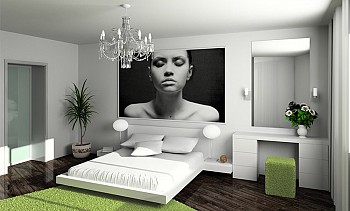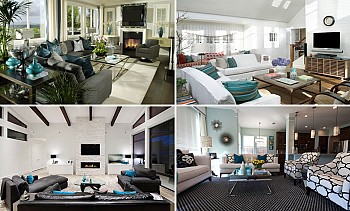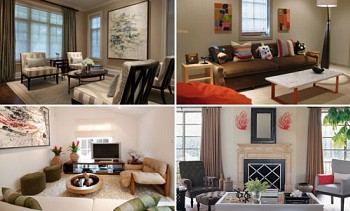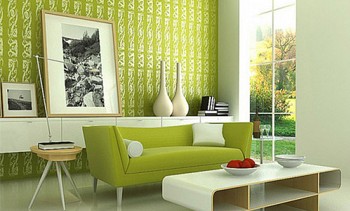Color in the interior plays a huge role, it is the color scheme of the room that makes it cozy and makes it stay longer. Thanks to color, a favorable visual climate is created, the creation of which must be approached carefully and creatively. A good combination of colors in the interior can improve mood and well-being, as well as create a unique cosiness.
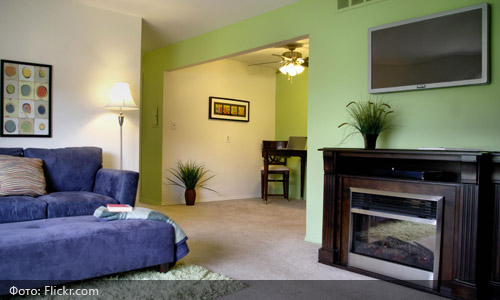
Content:
- Warm and cold colors - how to add color to heat
- The color scheme of the interior, depending on the location of the premises
- How to color correct room imperfections
- Color combination in the interior
- Video: Interior color and color psychology
- Video: Accent color in the interior
- Photo gallery of various color options for the interior
Proper selection and a good combination of colors can hide certain room flaws, as well as emphasize their advantages.
Using color, you can visually resize the room. With proper selection, you can narrow or expand the walls and lower or raise the ceiling of the room. In addition, color can affect the emotional state of a person.
Before deciding on the choice of color for a particular room, it is necessary to think over the general concept of the room and the apartment or house as a whole. In this case, it is necessary to take into account not only the color of the walls, ceiling and floor, but also the color schemes of curtains, upholstered and cabinet furniture and interior doors.
It is necessary to study the advantages and disadvantages of your premises. After that, decide to emphasize or hide, with the help of color, certain objects. The color of various interior elements will depend on such factors as the natural illumination of the rooms, the proportions of the rooms, the color change from artificial lighting, the emotional effect of color on a person.
Warm and cold colors - how to add color to heat
All colors can conditionally be divided into warm and cold. The main warm colors are red, yellow, orange, as well as all kinds of shades. In addition, warm colors include apricot, fawn, cream, coffee, green. The interior of the rooms decorated in warm colors, the windows of which do not face the sunny side, is lighter and forms a feeling of warmth.
Basic warm colors table
| Color name | Color view |
|---|---|
| Yellow |  |
| Orange |  |
| Red |  |
| Cream |  |
| Pale yellow |  |
| Apricot |  |
| Coffee |  |
| Green |  |
Cold colors include: blue, blue, lilac, purple, light gray and silver, as well as their various shades. These colors can be used in rooms with good natural light.
Primary Cold Color Chart
| Color name | Color view |
|---|---|
| Blue |  |
| Blue |  |
| Purple |  |
| Violet |  |
| Light gray |  |
| Silver |  |
The color scheme of the interior, depending on the location of the premises
Choosing the color of the interior, it is necessary to take into account the location and lighting of the rooms. Despite the fact that the room is located on the sunny side, its natural lighting may be insufficient due to the small opening of the window, vegetation or other buildings. The main rule that you must remember is that the darker the lighting in the room, the brighter the colors of the interior should be.
Thus, rooms with low light are best finished in light pink or light yellow tones, but not white. The thing is that surfaces painted white in low light look gray. And it spoils the look of the interior a little.
Interior spaces that are well lit should be done in colder colors and shades. This will slightly calm the sunlight and make all the surfaces in the room not so faded. At the same time, saturated colors should not always be used in rooms with good lighting.It all depends on where you live geographically. If you live in central Russia, where the number of cloudy days is more than sunny, the premises should be decorated with lighter colors and shades.
How to color correct room imperfections
The competent use of colors and modern finishing materials allows you to correct various imperfections in the premises. Thus, you can visually raise or lower the ceiling, expand or narrow the walls, beautifully beat various niches and ledges.
Warm colors and their shades visually increase the room. In addition, you can visually change the size of the room by changing the saturation of these colors. If the color saturation is large, the room will visually appear smaller. And vice versa, if a room is painted in cold, for example, blue tones, it will seem more spacious.
As for the finishing materials, the room room whose walls are decorated with a small pattern, for example, wallpaper with a small abstraction pattern, will seem more spacious. When using finishing materials with a larger pattern, the room will visually look smaller.
If it is necessary to visually increase the height of the ceiling in the room, then the finishing materials are applied to the walls up to the ceiling. In some cases, for this purpose, the ceiling or part thereof is painted or finished in the color of the walls. Vertical lines on the walls also increase the height of the ceiling, but at the same time they will visually reduce the size of the room.
The visual shortcomings of a long narrow room can be corrected by painting long walls in light, cold tones, and end walls in the same color but more saturated or even warm saturated colors.

The combination of color in the interior.
The coloring of various elements of the room varies depending on the combination of color in the interior. For example, a combination of blue with yellow gives a violet hue, and with red a greenish tint. In the interior of any room is a mass of objects whose colors are interacting with each other. Your task is to ensure that all objects placed in the room are in harmony with each other. A very important element of any room is furniture and its color and type of wood should be combined with the color of the walls.
Wall color combination table with furniture color and wood type
| Furniture color | Wood type | Wall color |
|---|---|---|
| Yellowish | Birch tree Maple Maple |
Gray, blue, green |
| Ocher | Oak |
Dark green olive |
| Reddish brown |
Red tree |
Yellow, Gray |
| Brown | Nut |
Beige, olive, Gray, yellow |










